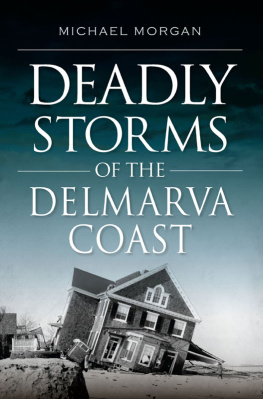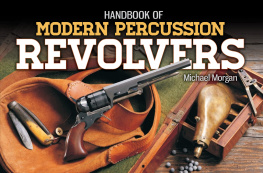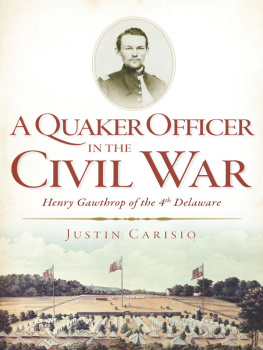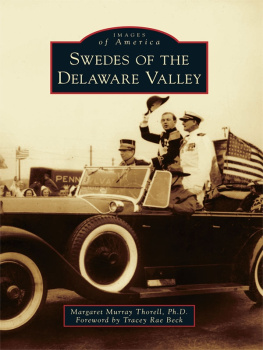

Published by The History Press
Charleston, SC 29403
www.historypress.net
Copyright 2012 by Michael Morgan
All rights reserved
Front cover: Fort Delaware from Harpers Weekly, June 2, 1863.
Courtesy of the Delaware Public Arvhives.
First published 2012
e-book edition 2012
Manufactured in the United States
ISBN 978.1.61423.711.2
Library of Congress CIP data applied for.
print ISBN 978.1.60949.445.2
Notice: The information in this book is true and complete to the best of our knowledge. It is offered without guarantee on the part of the author or The History Press. The author and The History Press disclaim all liability in connection with the use of this book.
All rights reserved. No part of this book may be reproduced or transmitted in any form whatsoever without prior written permission from the publisher except in the case of brief quotations embodied in critical articles and reviews.
Contents
Preface
Delaware, with an industrial north and an agricultural south, is an instructive prism through which to view the Civil War. Geographically positioned across vital Northern supply lines, Delaware, a slave state, sent proportionally more troops to fight for the Union than any free state. Torn by the political strife that mirrored the nation, Delaware supported President Lincolns call to save the Union and rejected any plans for the emancipation of the states slaves. By focusing on some of the heroes, soldiers and scoundrels, this work highlights Delawares involvement in the Civil War.
An accurate portrait of Delaware in the Civil War would not be possible without the images from the Delaware Public Archives. I would like to thank Randy L. Goss, coordinator of accessioning and processing/photo archivist/preservation officer at the archives, for his efforts in securing most of the images in this book. I would also like to thank my son, Tom, for his technical assistance for all computer issues. Finally, I would like to thank my wife, Madelyn, for her constant editorial advice and support. She read every word in this book numerous times and spent countless hours correcting my spelling, punctuation and grammar. Without her help and support, this book would not have been possible.

Letters of Stephen T. Buckson of the Fourth Regiment Delaware Volunteers are part of the Civil War holdings of the Delaware Public Archives. Courtesy of the Delaware Public Archives.
Chapter 1
First State on the Fence
DELAWARE ENTERS THE DEBATE
For a time our valleys will echo with the roar of artillery, and our mountains will ring with the reports of the rifle.
Senator John Middleton Clayton
The end of this, we say is warcivil war, John Middleton Clayton of Delaware announced on March 4, 1830.
Running from north to south, Delaware has only three counties: New Castle, Kent and Sussex. Clayton was born in Sussex County, home to bitter political discord that stretched back to before the time of the American Revolution. Lewes, a salty maritime town near Cape Henlopen at the mouth of the Delaware Bay, had been the county seat during the colonial period. For years, Lewes dominated Sussex Countys unruly politics, which pitted the coastal region against the more conservative inland areas. During the raucous election of 1787, the militia was called to restore order in the town and entered Lewes with colors flying, and themselves furnished with pistols, clubs, cutlasses &c to the great terror of the peaceable inhabitants of said town, and did then and there beat and wound several people. These tiny houses were built as simple rectangles or squares in which the first floor contained one or two multipurpose rooms. These areas were furnished with tables, chests, beds and other items that could be used for more than one function. Chests served as seats as well as storage containers; tables served as counters where meals could be prepared and eaten. At night, furniture could be shifted, and the floor became a common sleeping area. The homes were lit by fireplaces, candles and oil lamps; residents who had let their flames go out went to neighbors to borrow fire.

Senator John Middleton Clayton warned that sectional differences would lead to civil war. Courtesy of the Delaware Public Archives.
North of Sussex County lay Kent County, with more small farms, fewer slaves and containing Dover, the state capital. Geographically positioned in the middle of the state, Dover, the seat of Kent County, was a small, normally quiet town, except when it was swollen by the lawmakers, lawyers and lobbyists when the legislature was in session. With no port or deep-water facilities and little industry, Dover had little potential to be a big city. That claim would go to Wilmington.
On the northern reaches of New Castle County, Wilmington was separated from the rest of the state by the new Chesapeake and Delaware Canal that cut across New Castle County fifteen miles south of the city. In 1830, Wilmington was emerging from the shadow of Philadelphia thirty miles to the north. The budding city was nestled between Brandywine Creek and the Christina River near where the two waterways merged and flowed into the Delaware River. The Christina was blessed with port facilities capable of accommodating oceangoing vessels. The swift-moving Brandywine provided power for grist, textile and paper mills and, most importantly, the Du Pont powder mills.

Small houses were not uncommon in rural Delaware. Courtesy of the Delaware Public Archives.
A pupil of the noted French chemist Antoine Lavoisier, Eleuthre Irne du Pont de Nemours founded a high-quality gunpowder mill on Brandywine Creek in 1802. Du Pont powder featured an eagle on the packaging, and the ornithologist and poet Alexander Wilson was moved to write:
From foaming Brandywines rough shores it came,
To sportsmen deer its merits and its name;
Du Ponts best Eagle, matchless for its power,
Strong, swift and fatal, as the bird it bore.

Wilmington was nestled between the Brandywine Creek to the north (top) and the Christina River to the south (bottom). Courtesy of the Delaware Public Archives.
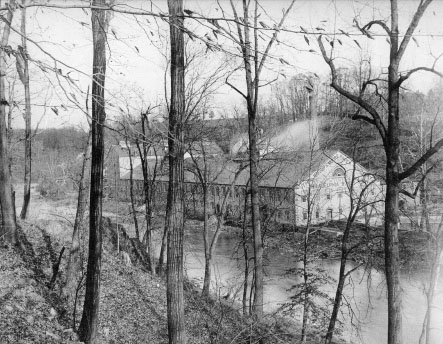
Paper mills, as well as the Du Pont powder works, rested on the banks of Brandywine Creek. Courtesy of the Delaware Public Archives.
The Du Pont mills quickly developed into the premier gunpowder factory in the United States, and when the tariff debate erupted, most residents of Wilmington favored a high tariff to protect the citys growing industry. Overshadowed by Philadelphia, Wilmington was developing into a significant port town, and the du Pont mills made the town unique.
Next page

